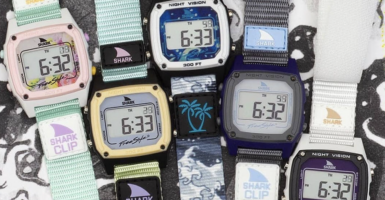Here’s What The Presidential Motorcade Has Looked Like Over The Years
The office of President of the United States is an important one indeed — and as such, the process of moving the president from place to place in a safe manner is a complex operation indeed.
The presidential motorcade has evolved over the years, from little more than a rented car to a high-stakes, technologically advanced security operation. Motorcades have marked triumphs and have also been the site of tragedy. Let’s take a look at this fascinating aspect of presidential life.
President Taft was a major influence.
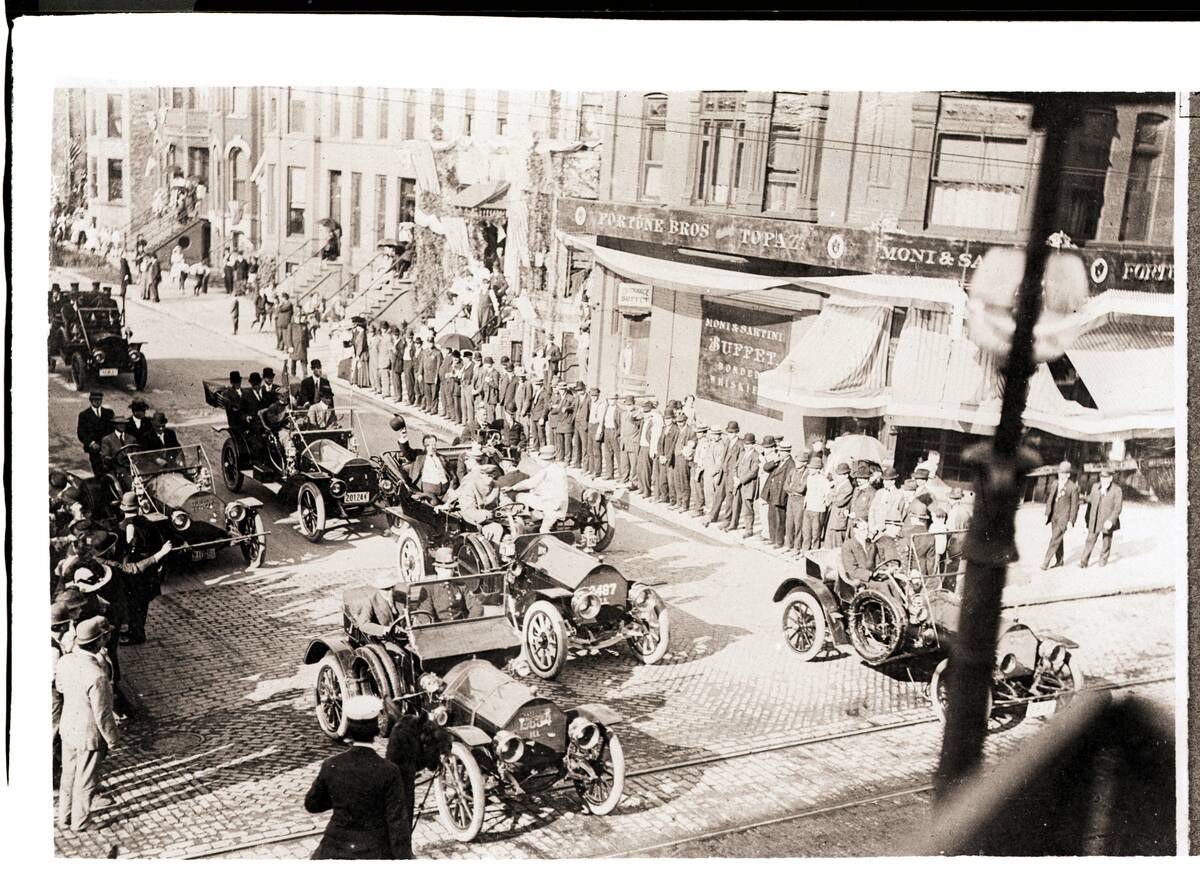
While William McKinley was the first president to ride in a car, William Howard Taft was the first president to install dedicated garages at the White House, converting the old stables to do so.
With a budget of $12,000 (around $420,000 today), Taft purchased four cars — two Pierce-Arrows, a Baker Motor Vehicle electric car, and a White Motor Company steam car.
Woodrow Wilson continued the tradition.
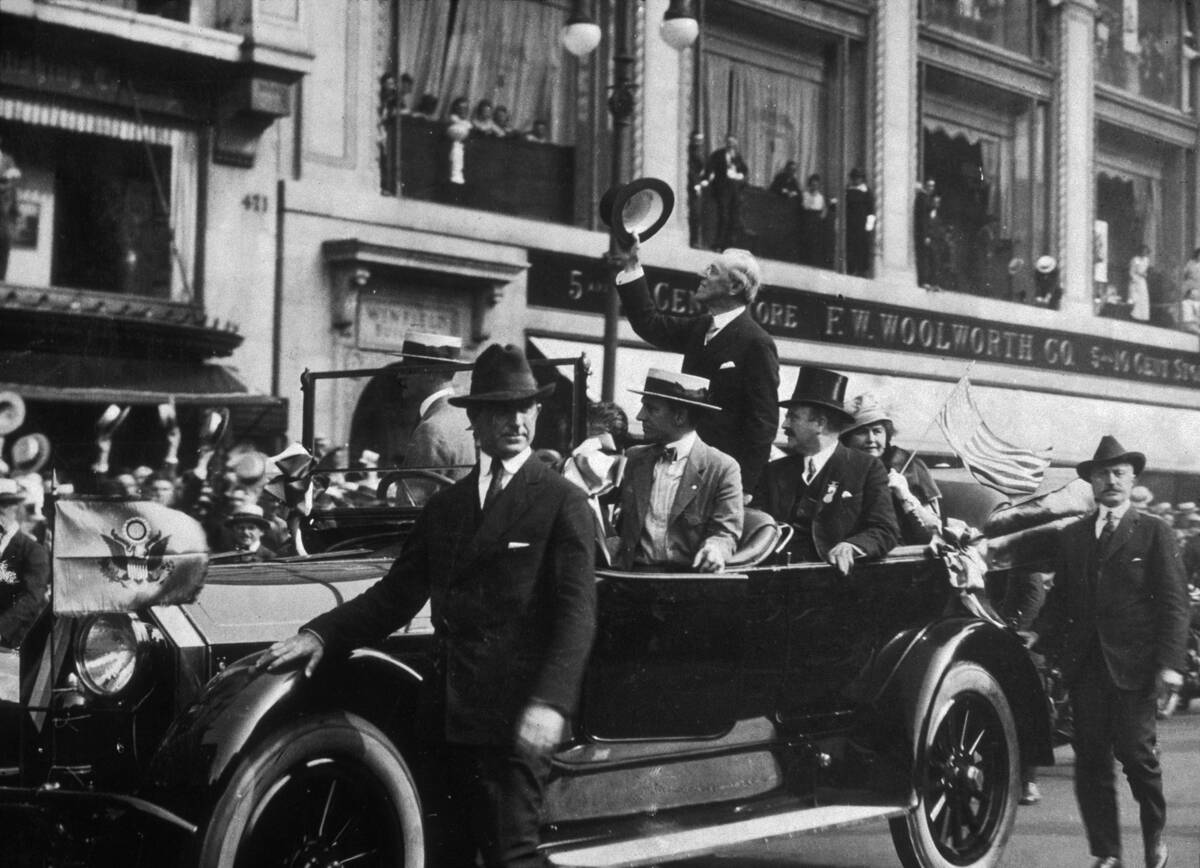
Taft’s successor Woodrow Wilson admired the Pierce-Arrow automobiles acquired by Taft, and continued to use them throughout his presidency.
In fact, when Wilson left office in 1921, he decided to purchase one of the cars with his own money. The cost was $3,000, which works out to about $53,000 today — a similar price to many modern cars.
Warren Harding picked up the motorcade tradition.
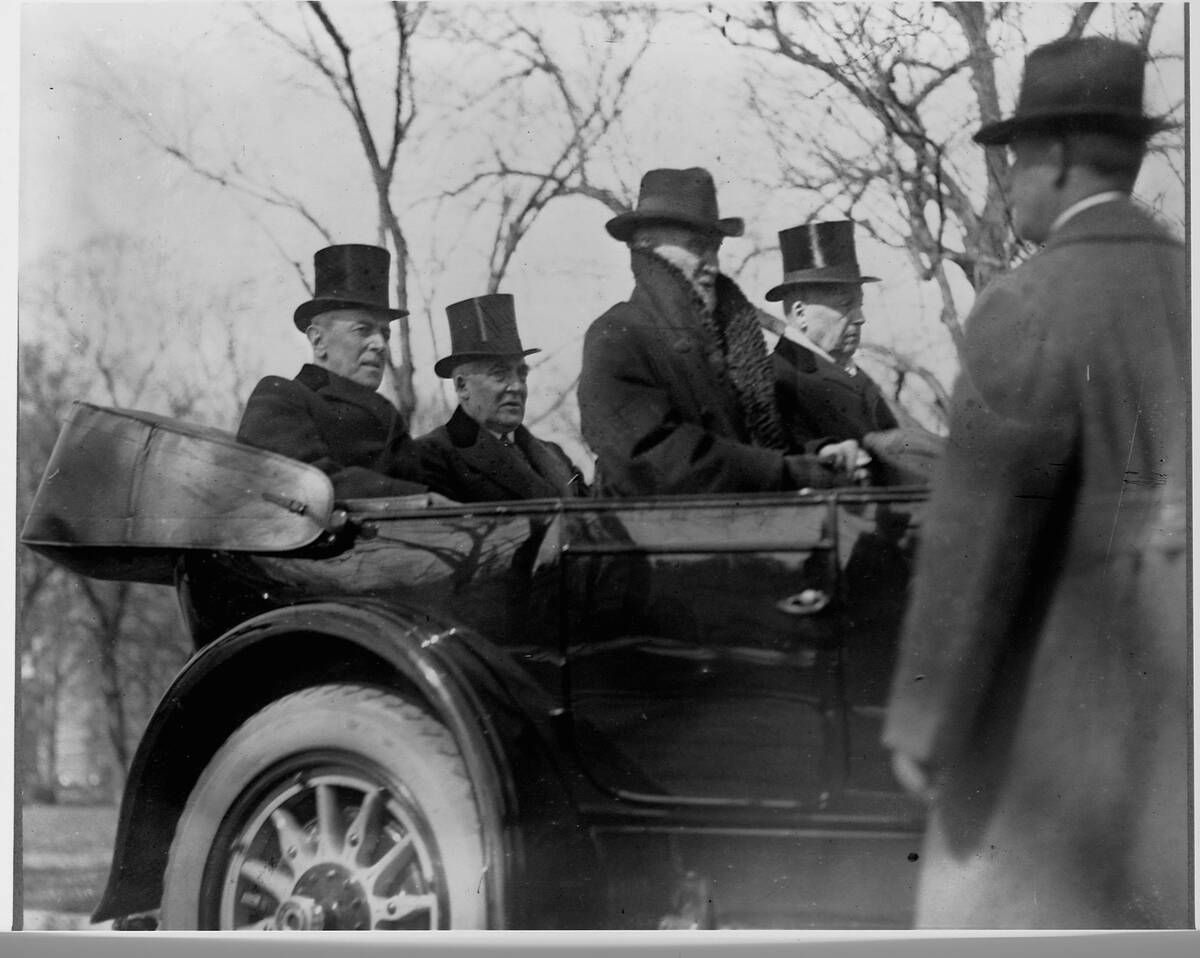
Harding, sitting in the backseat of this car alongside Woodrow Wilson, was the first qualified driver to be elected president, and also the first president to travel to his inauguration as part of a motorcade.
This image captures the route to his inauguration. In the front seat of the car are Speaker of the House Joseph Cannon and Senator Philander Knox.
FDR modified his car.
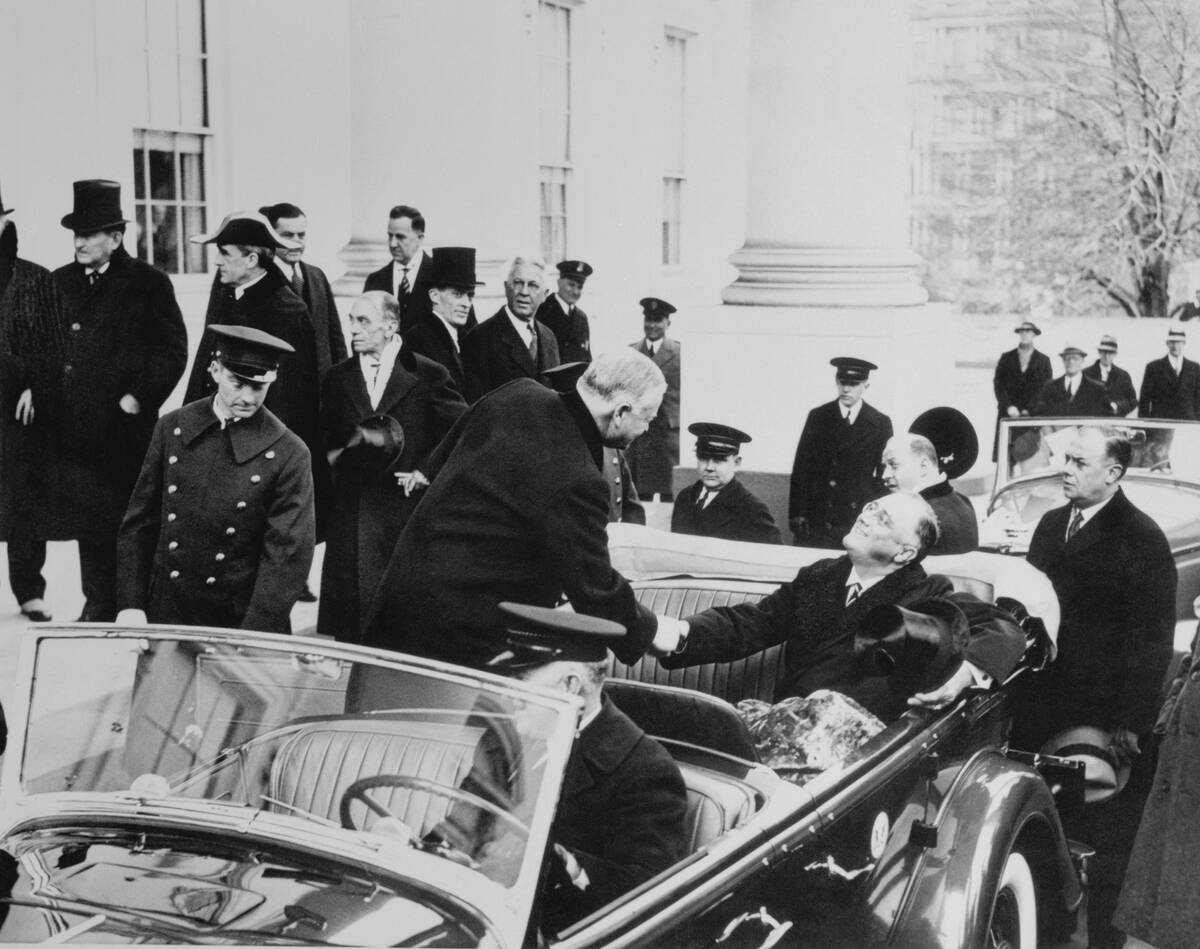
Franklin D. Roosevelt, seen here shaking hands with his predecessor Herbert Hoover, favored a Ford V8 Phaeton coupe as his presidential ride.
Because of his paralytic illness, Roosevelt needed hand controls in order to drive a car. He had them installed in the Phaeton, which was actually a direct contravention of Secret Service rules that prohibit sitting presidents from driving a car.
It isn’t just presidents that get the motorcade treatment.
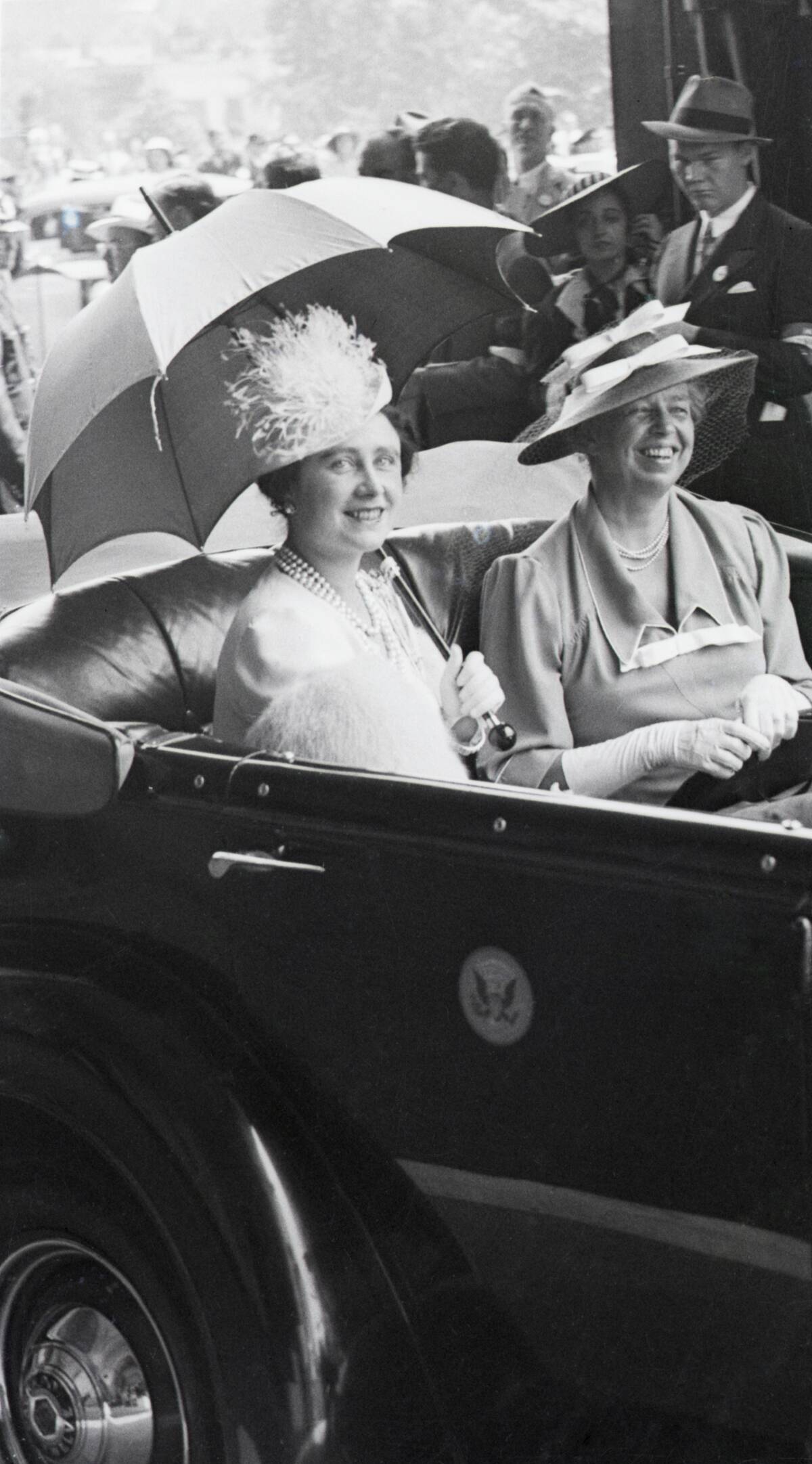
This image of Queen Consort Elizabeth and Eleanor Roosevelt sitting under a parasol as part of a motorcade for the Royal Procession in Washington shows that other dignitaries often get the motorcade treatment as well.
It can be a difficult task for the Secret Service to maintain security on these motorcades, considering how many logistical issues are at play.
Truman favored Lincolns.

According to lore, President Truman had a grudge against General Motors for not providing him with a car during his presidential campaign, so he opted for a Lincoln as his state car.
Truman and the White House leased ten Lincoln Cosmopolitans, which were outfitted with extra security features and painted a uniform black. Nine had enclosed bodies, while the tenth was an armored convertible.
Eisenhower continued in Truman’s footsteps.
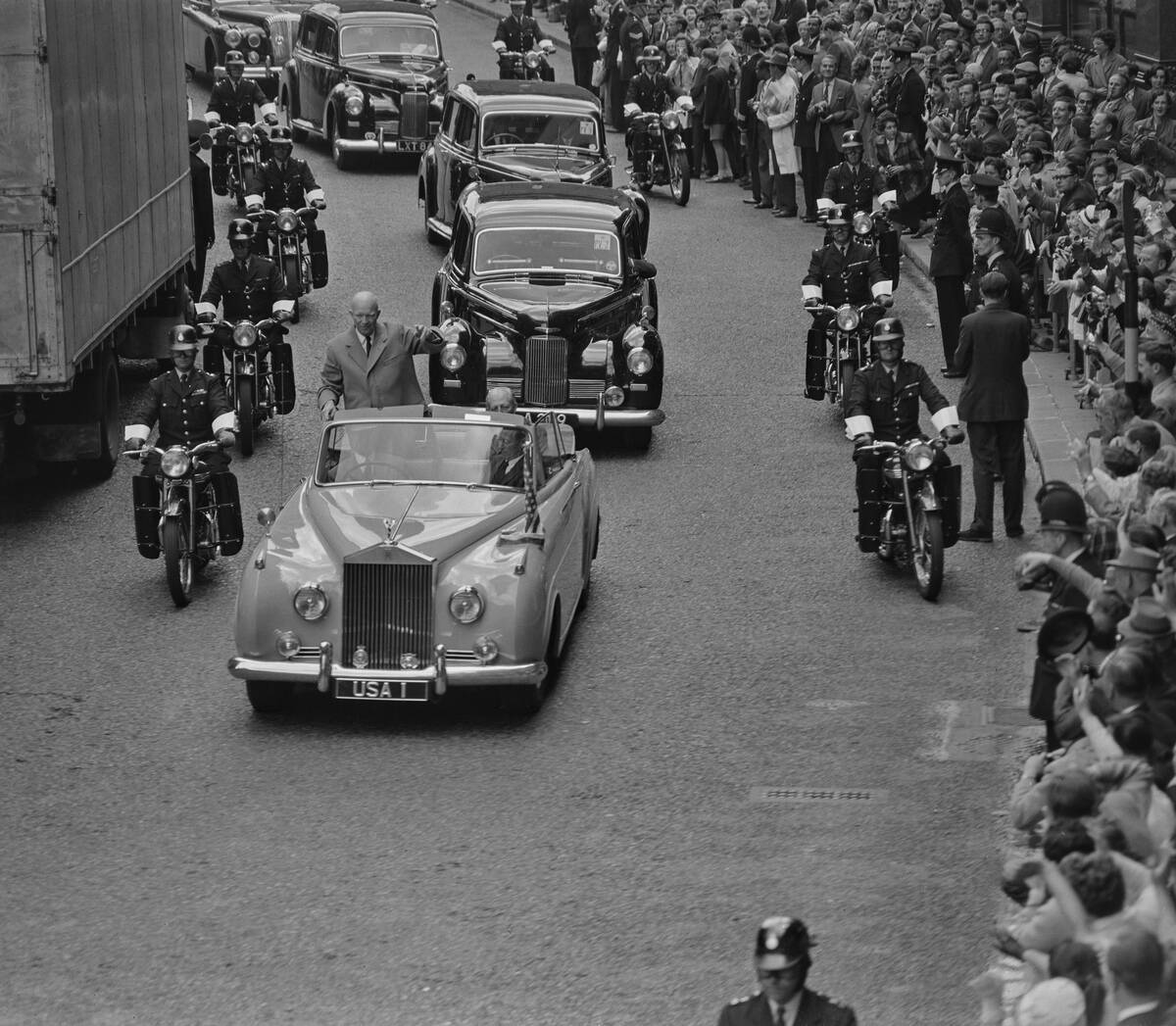
Dwight D. Eisenhower went for simplicity by continuing to lease Truman’s fleet of Lincolns. He did modify the convertible to incorporate a Plexiglass roof, and this vehicle remained in presidential service until 1965.
This image of a 1959 motorcade, however, shows Eisenhower in a Rolls Royce. That’s because he’s on an overseas trip in the United Kingdom, and the Secret Service did not yet ship presidential cars overseas.
In 1963, tragedy shook the nation.
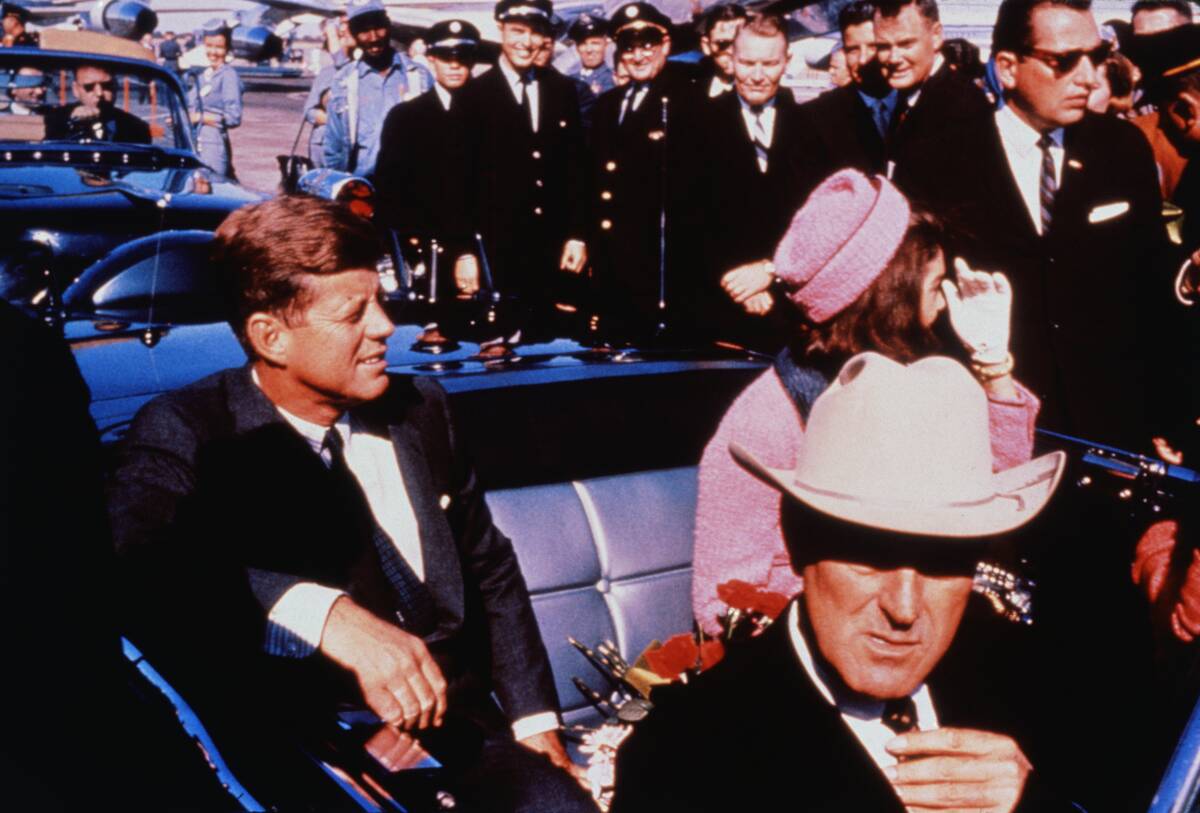
Sadly, the most iconic image of a presidential motorcade may well be when President John F. Kennedy was shot and killed by an assassin’s bullet in 1963.
Kennedy’s shocking death prompted wholesale changes at the Secret Service, which included a refit of the presidential auto fleet to add armor and other security measures.
It didn’t put an end to motorcades.
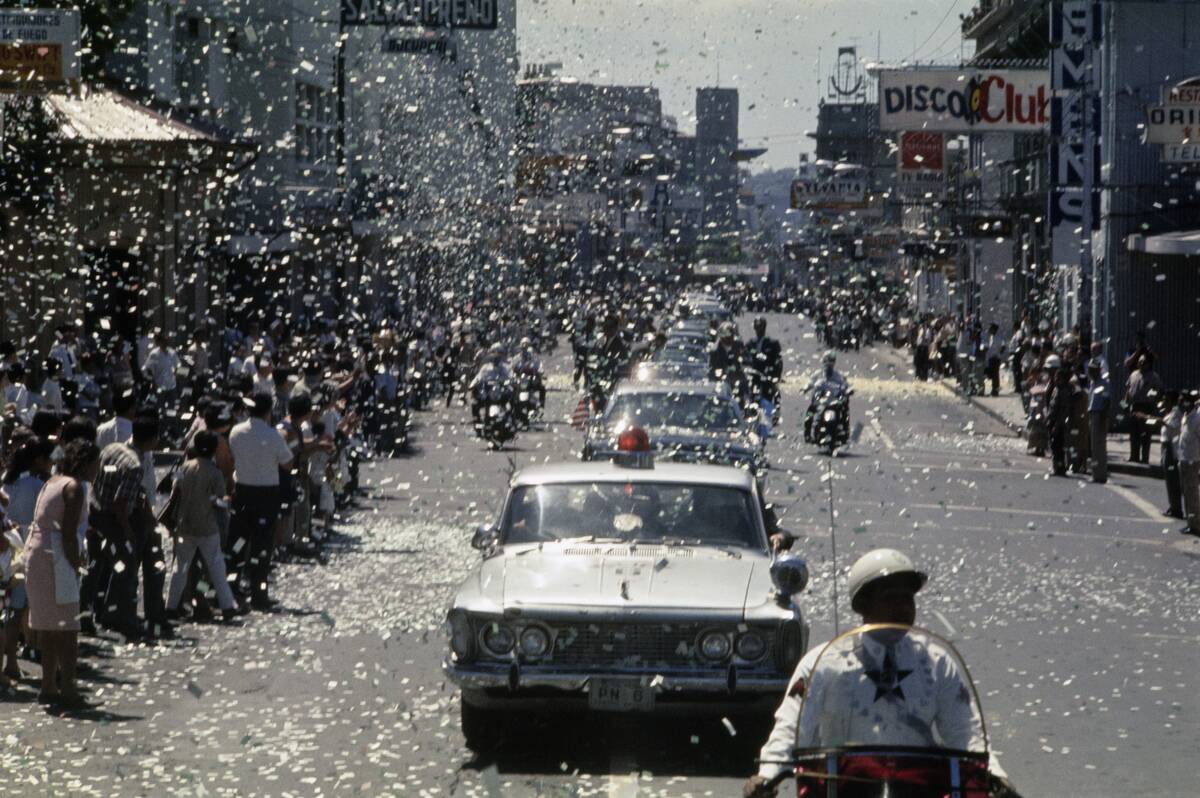
After Kennedy’s death, motorcades became more about quickly, securely delivering the president to a given location rather than serving as a parade float.
This image of President Johnson’s motorcade in Central America shows that motorcades would still attract spectators, though, even if the president himself isn’t visible.
Presidential cars are armored.
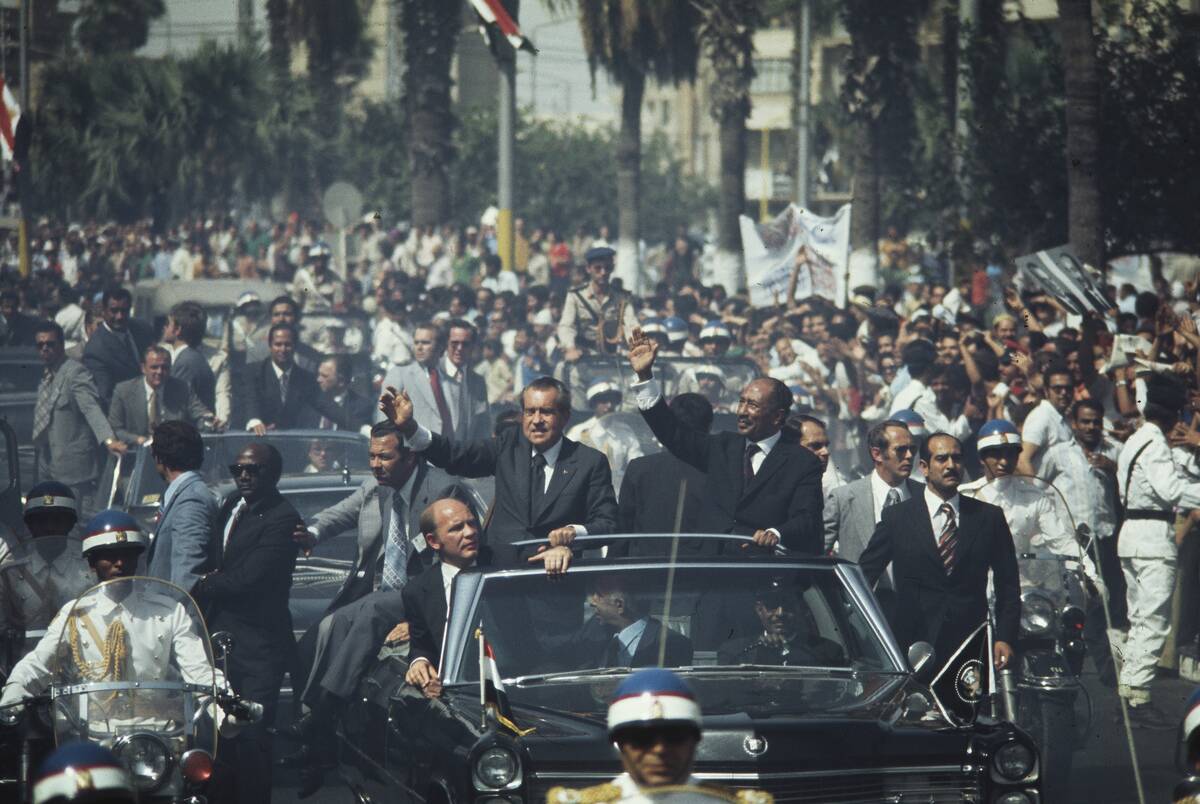
The vehicles used by the president had been modified in the decades prior to Kennedy’s death, but security measures were dramatically increased in the 1960s and 1970s.
The Lincoln Continental used by President Nixon had full armor plating, bulletproof glass, space for submachine guns, and external microphones to allow the occupants to hear outside noises.
The Air Force transports the cars.
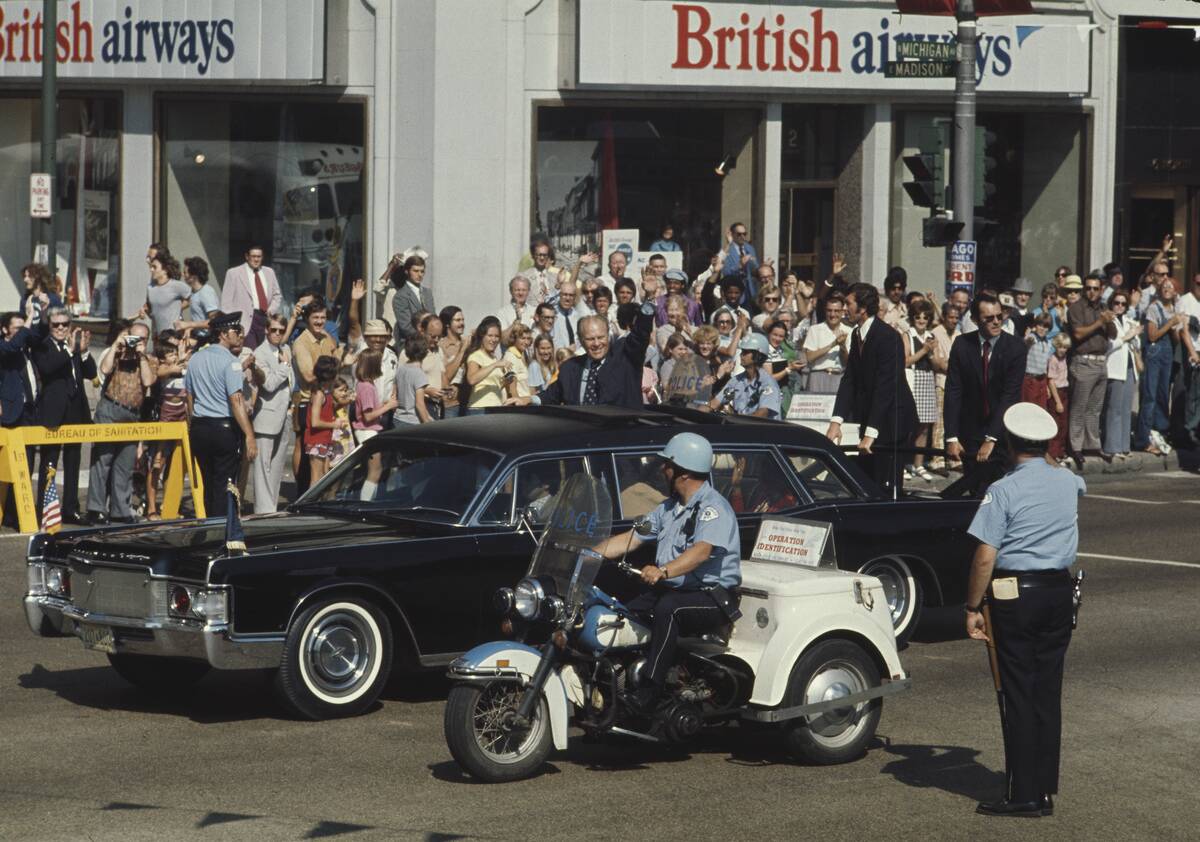
President Ford, seen here, used the same Continental as Nixon (and later, Carter, Reagan and Bush). When the vehicle isn’t in use, it’s transported to the next location by the United States Air Force in a Lockheed C-141 Starlifter cargo plane.
The 1972 Continental, first used by Nixon, was retired in 1992 with 40,617 miles on its odometer — an impressive amount of mileage given the short distances it usually drove.
Motorcades always made for good photo ops.
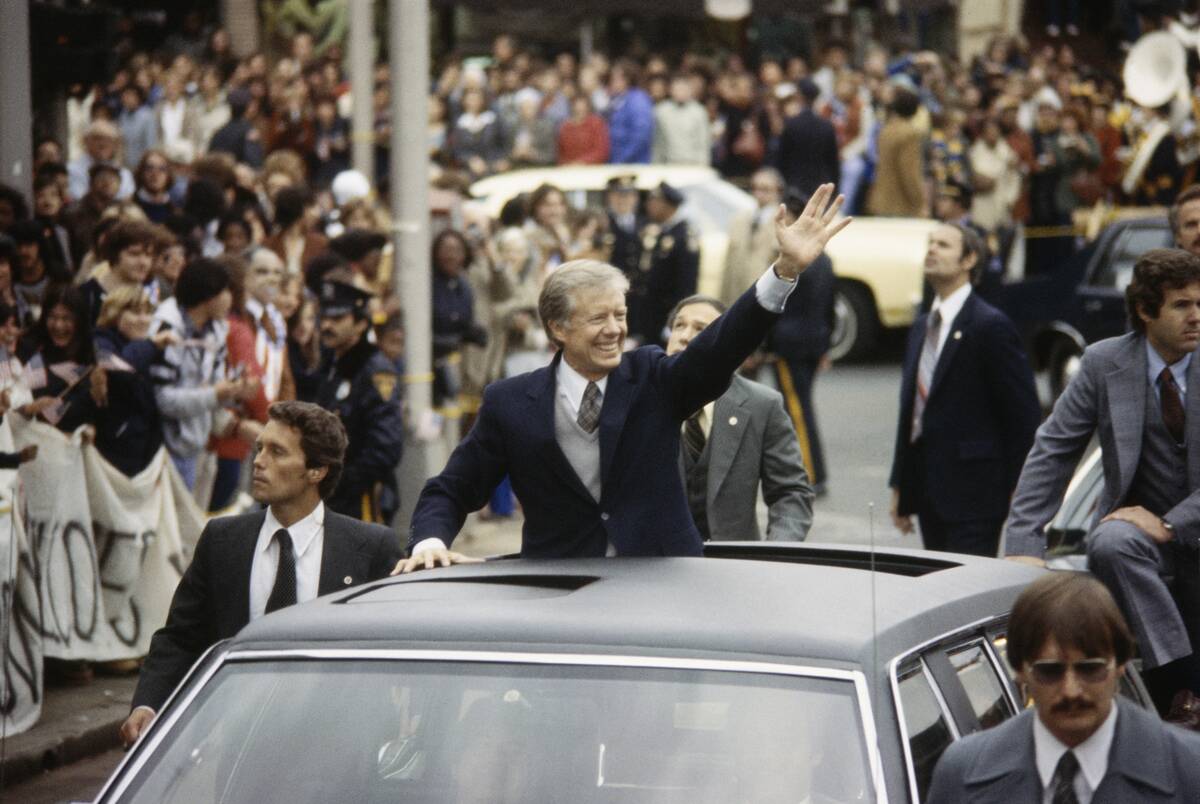
Modern presidents are rarely seen in such a public way as Jimmy Carter in this 1979 photo. Indeed, the modern presidential motorcade is typically a fast-moving procession of cars with tinted windows, with the president himself nowhere in sight.
While the JFK assassination may have led to added security measures, it’s clear that presidents would continue to use motorcades for these public photo ops for at least a few years to follow.
Reagan was the last president to use the 1972 Continental.
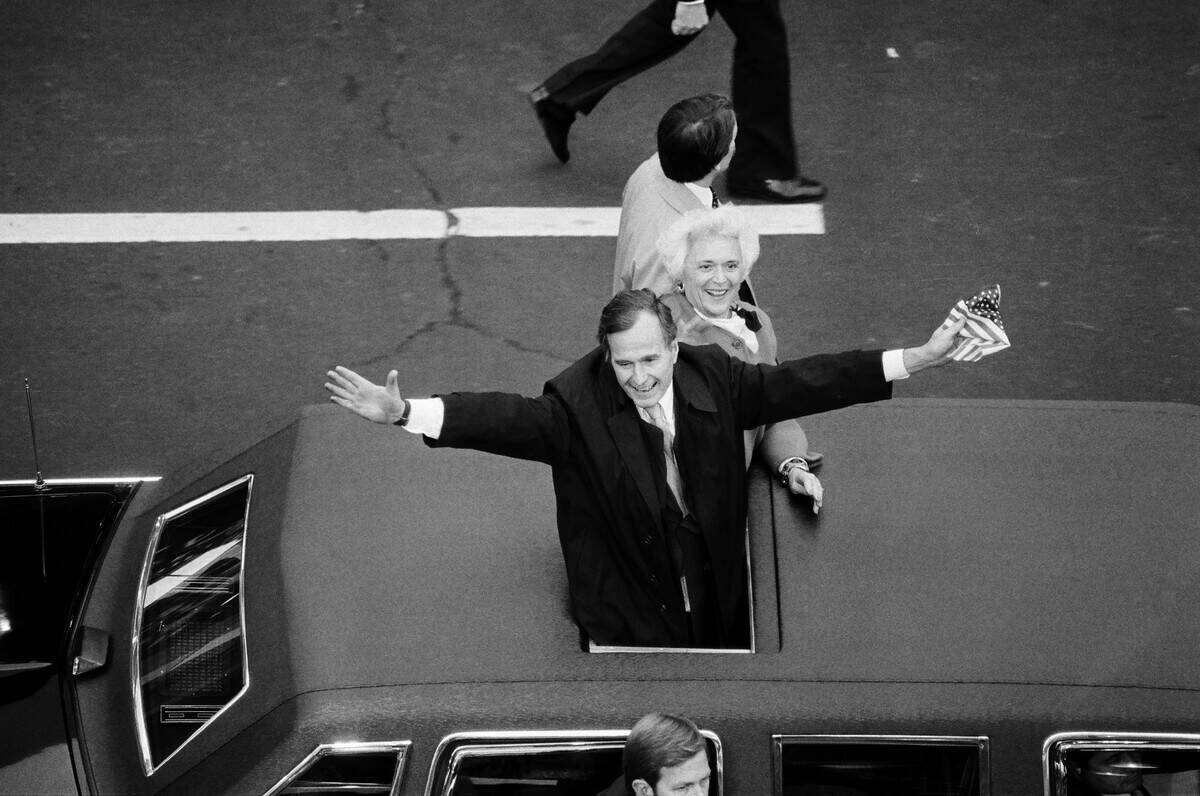
While this image shows George H.W. Bush and his wife Barbara in the presidential motorcade, they’re actually there as part of President Reagan’s first inauguration. Reagan is presumably somewhere inside the car.
Bush would, of course, become president later in the decade but by this time, the presidential state car was a 1983 Cadillac Fleetwood.
Clinton favored the Fleetwood.
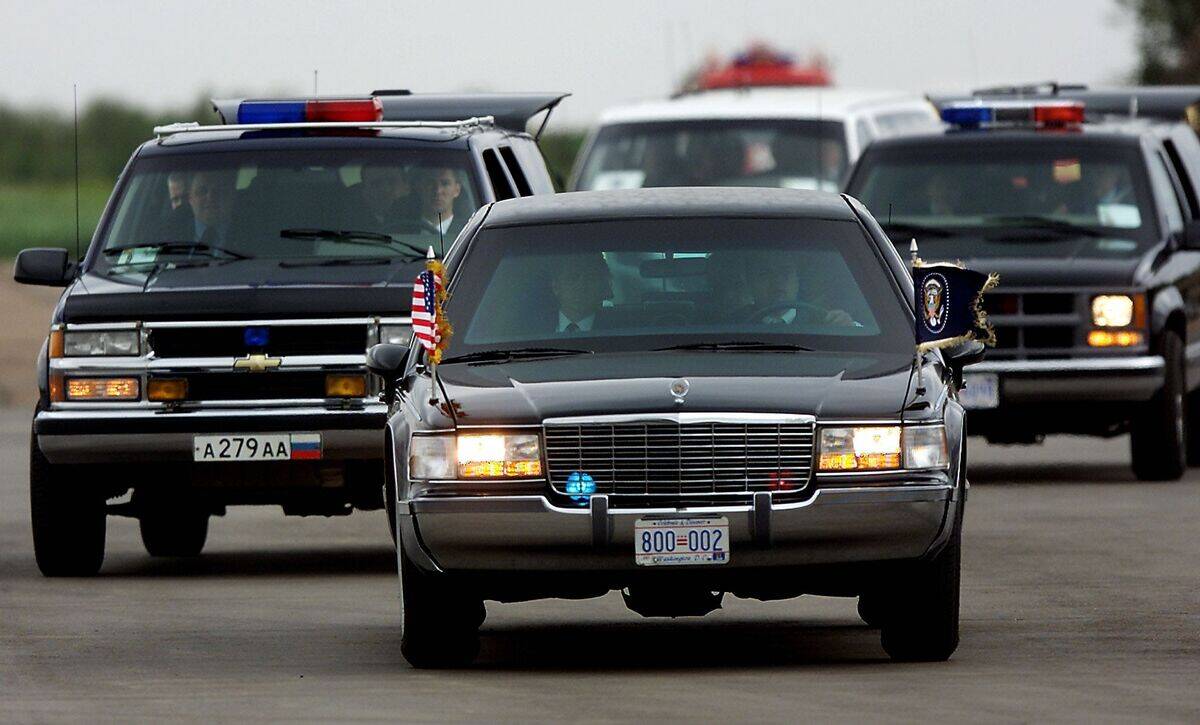
Reagan and George H.W. Bush used a Cadillac Fleetwood as state car. In 1989, a Lincoln Town Car replaced the Fleetwood, but it wouldn’t last for long.
Clinton returned to Cadillac during his presidency, opting for a 1993 Cadillac Fleetwood as his presidential state car. It was a modern presidential car: Completely sealed off from the outside world via armor and bulletproof glass, but with numerous communication options built into the interior.
In the new millennium, presidential cars became truly unique.
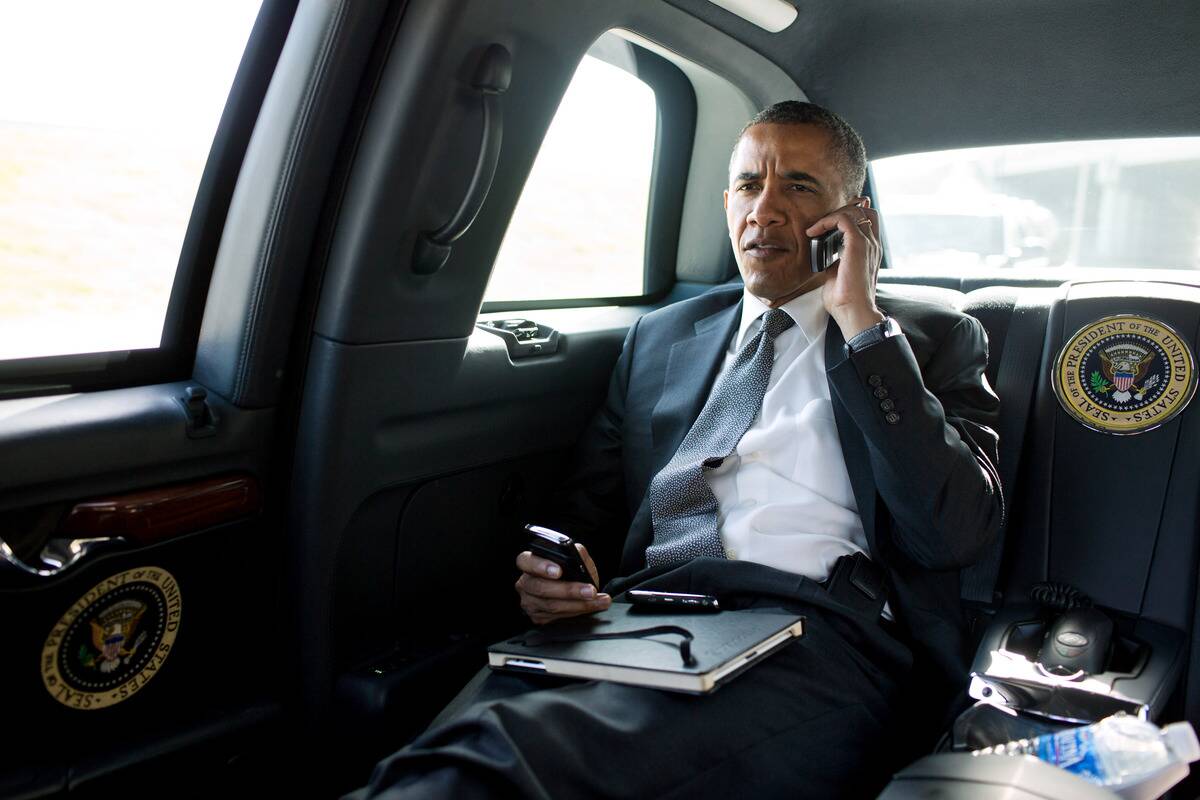
While presidents from Taft to Clinton had used cars that were essentially modified versions of off-the-street models, the state car shifted to a custom, bespoke design in 2001 under the presidency of George W. Bush.
The Bush state car was designed from the ground up by a division of General Motors. A similar, updated custom state car was used by President Obama.


